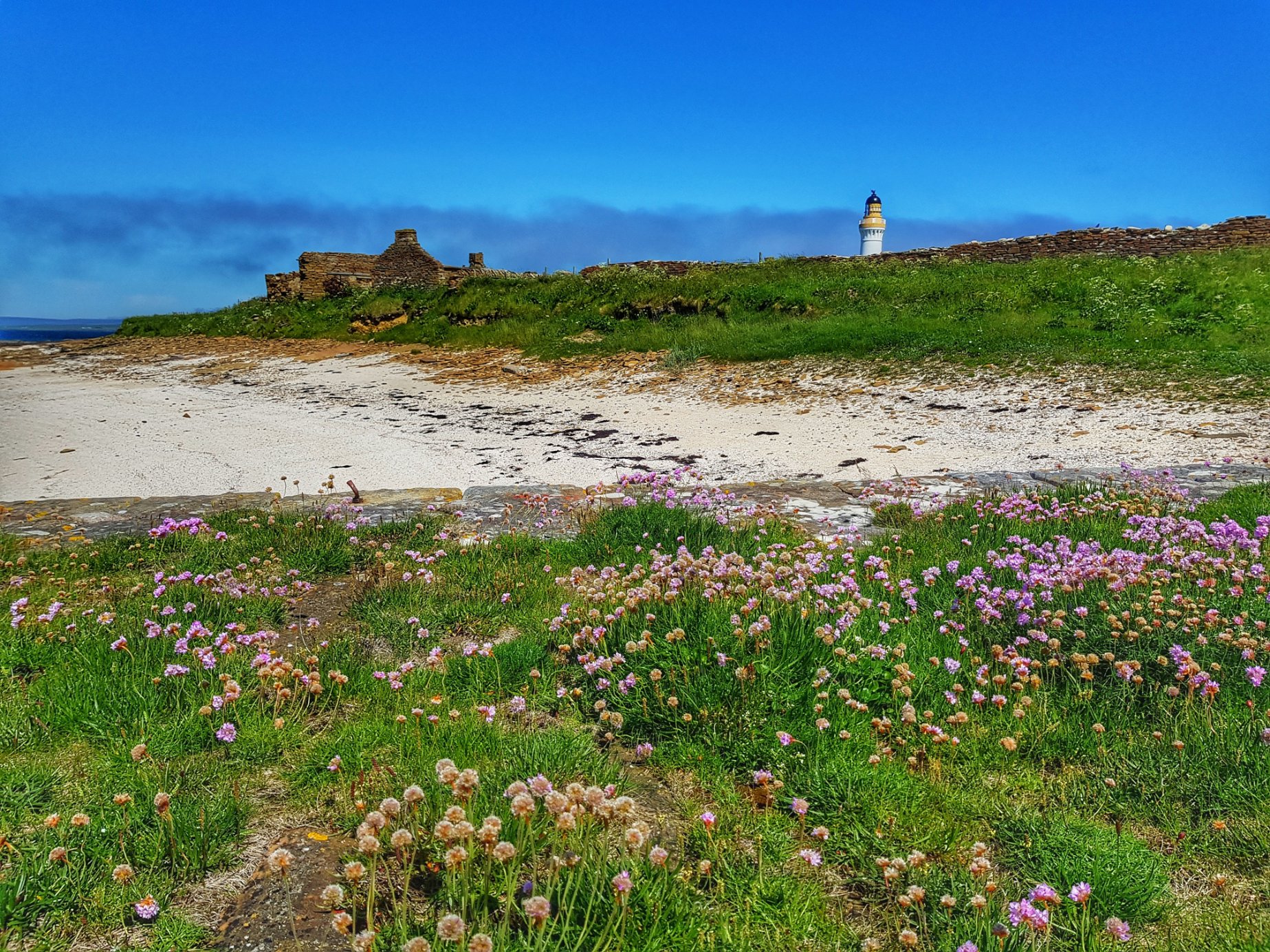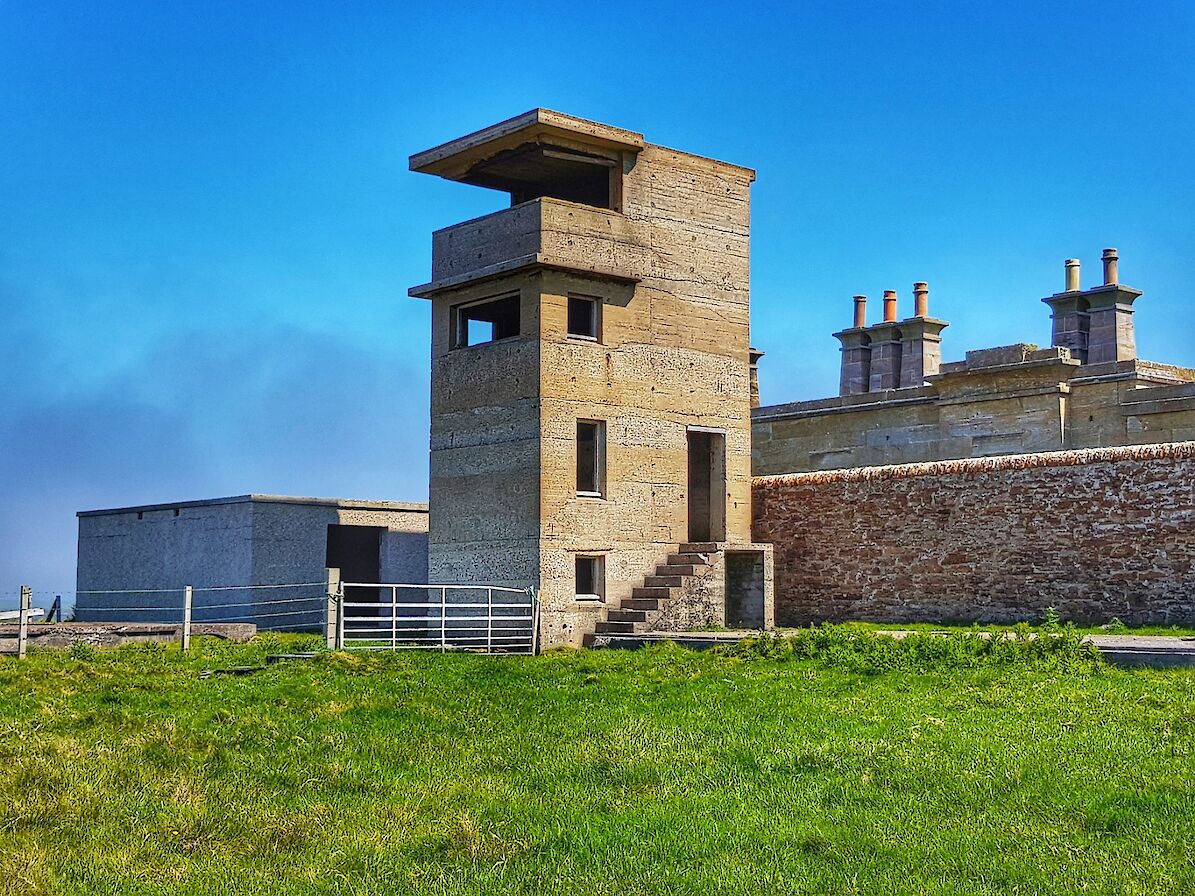Graemsay measures a mere two miles wide and with just over 20 inhabitants, this low-lying Orkney island is very much overshadowed by Hoy, its bigger and better known neighbour.
It has no tourist attractions, cafes, shops or indeed any facilities - with the exception of a public toilet at the ferry pier. There are no famous Neolithic sites, giant sea-stacks, photogenic puffins, seaweed-eating sheep or any other notable selling points. If you want to contribute to the economy, your only option is to buy a local handicraft from an honesty box.
So you may wonder why, on a sunny Orkney day, with many more popular island excursions to choose from, my husband and I opted to make the short morning crossing from Stromness to spend the day there.

It was a decision that also perplexed the ferry man; apparently visitors to Graemsay are a novelty. However, I had been inspired to visit when I discovered there was a six-mile coastal trail around the island. I was also intrigued to explore a place that, even with internet research, I could find very little about.
On arrival we followed the coastal walk clockwise from the pier, soon passing derelict crofthouses. These are just a few of the many abandoned buildings scattered across the island and evidence of a once sizeable population. In the 1840s over 200 people inhabited Graemsay, with 36 crofts and many of the men involved in the fishing or whaling industry. Rusting boat winches, crumbling slipways, dilapidated fishermen's huts and empty boat nousts are some of the other remnants from a bygone era.
It quickly became apparent that the coastal route is rarely used as the path began to fade away and we found ourselves wading through thigh high yellow flag irises. Walking along the shoreline seemed the easier option and the detour also rewarded us with a view of basking seals, countless nesting fulmars and a variety of other seabirds swooping and swimming. I was in my beachcombing element as I collected washed up pieces of faded pottery and colourful sea glass. I was also encouraged by how clean the coast was in general, with a lack of plastic and fishing debris that has become far too common elsewhere.

A picnic table at the old kirk was a pretty location to stop and enjoy our packed lunch. The view across to Hoy, partially shrouded in a layer of mist and surrounded by cobalt blue water, was magical. On such a peaceful day it was easy to forget how treacherous the surrounding waters can be. However, a walk around the small kirkyard was a blunt reminder of the dangers that seafaring communities face. Drowning victims are detailed on headstones, with one such grave belonging to a local named Joseph Mowat. He died while rescuing people from the Albion, a ship that wrecked off the coast of Graemsay during a storm on New Year's Day in 1866. Sadly, ten passengers and crew also lost their lives.

Although tragedies still occur today, the frequency that ships were wrecked in previous centuries is almost unfathomable. One measure taken to assist safe navigation through Hoy Sound was the construction of two lighthouses in Graemsay. Hoy Sound Low and Hoy Sound High were designed by Alan Stevenson, from the third generation of famous Stevenson family lighthouse engineers. They were officially lit in 1851 and the trail takes you past them both, although they are now private residences.

At Hoy Sound Low we took the short detour to visit the remains of a WW2 coastal battery. It was one of many strategically placed gun batteries across Orkney to protect Scapa Flow, although the one in Graemsay was unusual as it had no roof. As we ventured on we were joined by a lapwing circling overhead, its distinctive peewit call echoing across the fields and we took a little time out to enjoy the many butterflies flitting across the vibrant wildflowers.
As the path opened up we got our first view of Sandside Beach and I couldn't help but think that it must be one of Orkney's best kept secrets. Punctuated by Hoy Sound High lighthouse and backed by sand dunes, it looked like a little slice of paradise. The white maerl beach was dazzlingly bright in the afternoon sun, and after a long walk this felt like a worthy reward as it also signalled that we were nearing the end of our route.
With a little time to spare before the return ferry, we stretched out on the old pier, soaking up the sun among the swaying sea pinks.
I reflected on our day's adventure and came to the conclusion that the lack of people, tourist attractions and development is actually Graemsay's unique selling point.
It has allowed nature to thrive and the largely undisturbed habitat provides a peaceful sanctuary for a diverse range of wildlife, and the occasional intrepid visitor looking to get away from it all.
Find out more about Hoy and Graemsay.
You can travel to Graemsay with Orkney Ferries - note that the ferry is a passenger only route.
Susanne Arbuckle hosts the Adventures around Scotland blog - visit her website for more travel ideas and inspiration in Orkney and further afield across Scotland.
The Digital Orkney project has been part financed by the Scottish Government and the European Community Orkney LEADER 2014-2020





